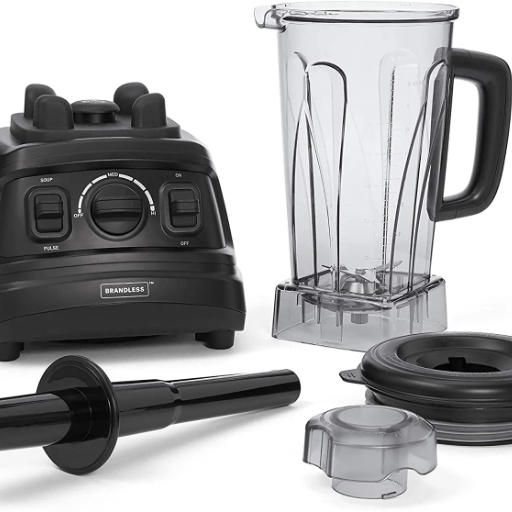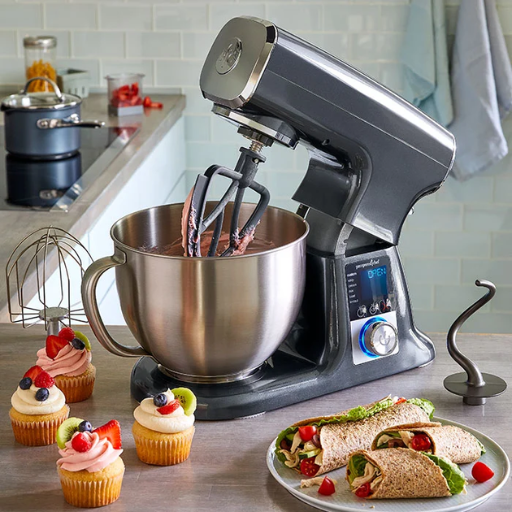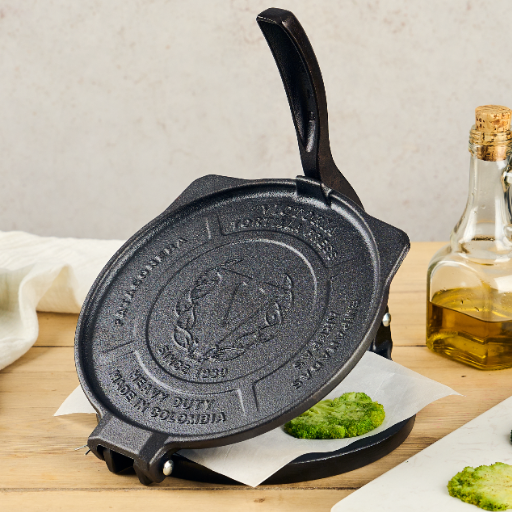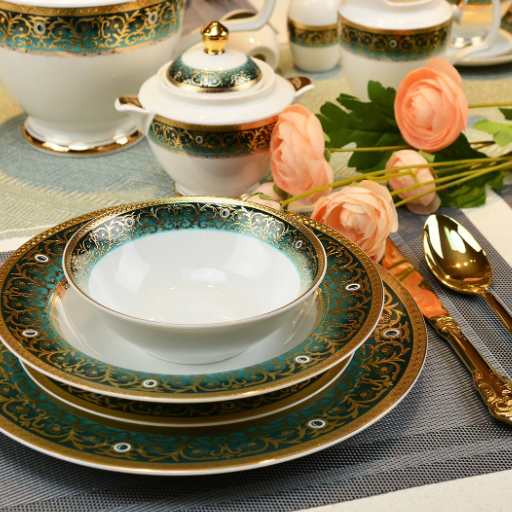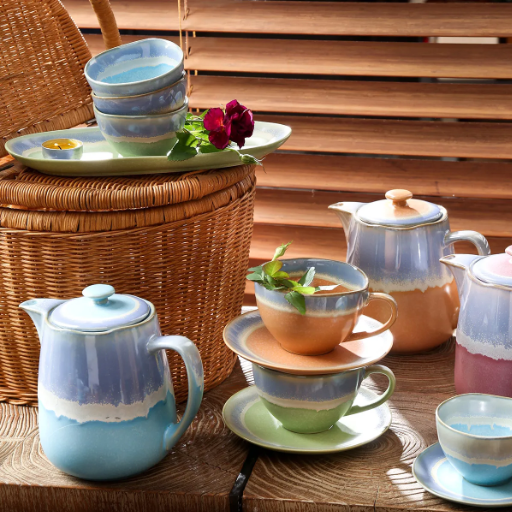For tea lovers, the right tools can elevate an everyday cup of tea into a serene and calming experience. Selecting the optimal tea kettle or teapot involves much more than aesthetics. It is also a matter of practicality, longevity, and brewing quality. This primer aims at helping you choose the most appropriate options based on your brewing habits, whether you enjoy tea casually or appreciate it as a connoisseur. We will cover all the heating methods, materials, and design features you need to know in order to choose the best complement to your tea-making ritual. We will also discuss some of the best tea kettles and teapots that offer unmatched aesthetics while being supremely useful.
What is the Difference Between a Tea Kettle and a Teapot?
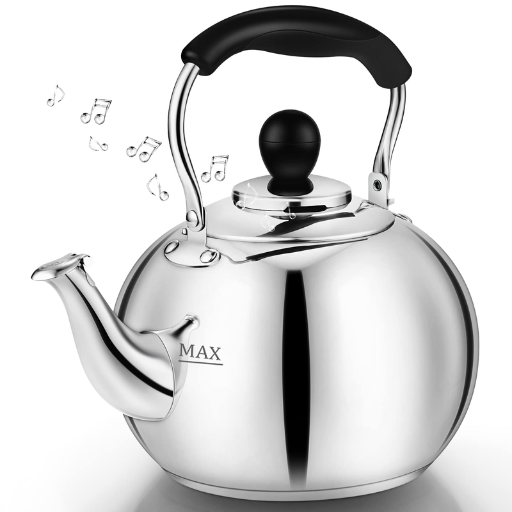
Both the tea kettle and the teapot are integral in their own ways to the process of making tea. The kettle is used to heat water, and can either be electric or placed on a stove where water can be boiled. It is constructed to form with a spout and automatically opens and releases hot water; therefore, it does not require a lid to be opened. On the other hand, a teapot is used for steeping tea leaves in hot water and its materials such as porcelain, ceramic and glass which are known to carry heat well, do not do well when placed close to burning objects. In simpler terms, boiling water is the main purpose of a tea kettle and tea is brewed and poured in a teapot.
Understanding the Function of a Tea Kettle
It is not only for making tea that different kinds of tea require precise heated water temperatures. Heating water for a variety of reasons can be done easily and efficiently with the help of tea kettles, which come in both traditional stovetops as well as modern electric ones. Newer electric tea kettles come with useful features such as rapid boil, tea type-specific auto shutoff, and temperature control for brewing tea, as well as safety and energy-efficient auto shutoff functions. Simplicity and ease of us is the main reason why many people still prefer stovetops over electric kettles. Regardless, today’s kettles made out of stainless steel, aluminum, and copper also focus on keeping heat as well as being more durable. These features, along with ergonomic ease for pouring and cleaning, and the evolving consumer’s needs, modern technology, and modernization all make tea kettles useful in a myriad of different ways.
How a Teapot Complements Your Tea Experience
No one can deny that a teapot is very useful when it comes to making tea as it simplifies the steeping process. Usually crafted out of porcelain, cast iron, glass or any other heat-resistant material, teapots are made to keep the water at the proper temperature to extract all of the flavors within the tea. In addition to that, the shape and size of the teapot impact it’s functionality. They determine how the water circulates and therefore, evenly exposes the tea leaves to heat. Besides, modern teapot models incorporate built-in filters and precise pour spouts to better control the brewing process to prevent oversteeping. A properly designed teapot that retains heat while providing control during brewing makes them invaluable to tea lovers who want to perfect the taste and entire experience of tea.
Common Materials Used in Tea Kettles and Teapots
Selecting an appropriate material for a teapot or a tea kettle has considerable consequences on their efficiency, longevity, and the entire experience of drinking tea. The material used for tea kettles is usually stainless steel and for good reason, it does not rust, the stainless steel has an easy ironing and wonderful heat conductivity. Glass is quite popular too because it enables the owner to observe closely and set the required time for delicate teas like green or white. Borosilicate glass is even more useful due to it’s strength and ability to withstand extreme temperature changes.
What Are the Best Types of Tea Kettles Available?
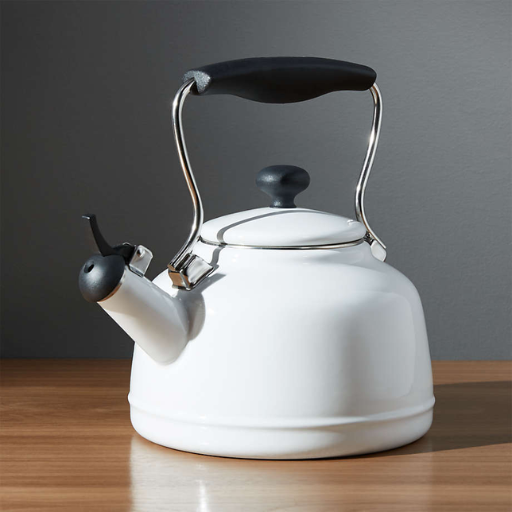
In case of the best teakettles, they do differ for personal needs however some do stand out for their quality and function:
- Stainless Steel Kettles – They are made of durable materials, resist rust, and has even heating. They’re easy to keep long-term and work with pretty much every stovetop.
- Electric Kettles – These serve well in fast boiling and temperature precision needed for different types of tea which makes them an amazing option when tea is on the menu.
- Glass Kettles – It’s glassy beauty gives them an amazing aesthetic appeal and lets their user keep track of the boiling process.
- Cast Iron Kettles – Maintenanced Kettles that retain heat are easy to keep warm over long periods of time while retaining the optimal temperature for tea.
Durability, tea kettle design, ease of cleaning, and speed all matter when selecting the best electric kettle.
Electric Tea Kettles: Convenience at Your Fingertips
Electric kettles are amongst the most convenient, speed efficient, and easy grounds of boiling water. Their modern counterparts offer features such as a temperature setting, rapid boil, and even an automatic shut-off for the user’s convenience and safety. For precise lovers, many models allow you to set temperatures when boiling water which is crucial when working with frail teas like the white or green. Many modern electric kettles are designed with stainless steel and glass and possess eco-friendly energy-saving technologies too. For blend lovers that appreciate modern kitchen aesthetics, sleek is not gone at electric tea kettles as they combine style and pragmatism. To those who value speed, precision, or both, these appliances are a must-have. Check out glass tea kettles and notice their beauty and functionality at the same time.
Glass Tea Kettles: Aesthetic Appeal and Functionality
Glass tea kettles have a clear design, allowing users to witness the boiling process. Unlike traditional kettles, users reap both practical and aesthetic benefits. Many modern versions have advanced features, which include LED lights marking the temperature, variable temperature control, and safety-related auto shut-off functions. They’re made of heat resistant, durable borosilicate glass which ensures long-lasting use and preserves water’s purity by not absorbing odors or flavors. They also offer a BPA-free option to health-conscious clients, reducing chemical risk linked to some plastic alternatives. This combination of practicality and beauty ensures glass tea kettles are easily favored in offices and homes.
How to Choose the Right Teapot for Brewing?
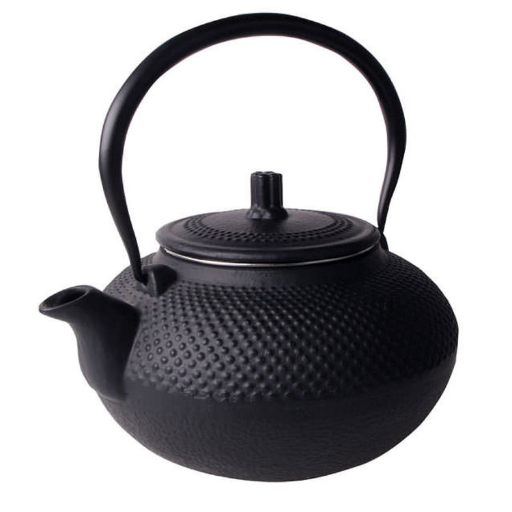
Keep the following factors in mind when selecting a teapot for brewing:
- Material: Choose a glass teapot if you love observing the tea as it steeps. Other good options are ceramic and porcelain since they tend to retain heat. Cast iron teapots take a longer time to heat up, but stay hotter for longer. They also need a bit more care compared to the others mentioned. Heat retention is superb, but rusting is an issue over time which affects longevity. They need to be cared for properly.
- Size: Opt for a small teapot if you’re going solo however if you’re serving friends a larger one is better. Make sure you choose a size that matches how many servings you usually brew.
- Ease of Cleaning: With tea leaves, look for teapots where efficacy directly correlates with the size of the port whereby a greater size increases ease of cleaning the kettle.
- Infuser or Strainer Included: While steeping loose tea, an internal infuser or strainer works to automate the work of loading tea leaves into the pot.
- Design: Go for something functional while keeping shape and feel in mind. Pick a teapot with a comfy handle and a spout designed to prevent drinking flows from spilling.
Through adjusting the balance of these factors, you may choose a teapot that will suit your needs best while elevating your tea drinking experience.
Size and Capacity: Finding the Perfect Fit
When you are looking for a perfect teapot, the size and wonderful capacity must fit your requirements which you are looking for. Teapots are generally ranged from single-serving sizes of 12 ounces to large ones that hold more than five cups. From an individual perspective, a small teapot allows serving to minimize wastage while ensuring fresher servings. However, frequent group settings will demand a larger size to serve several guests at a time.
While choosing the teapot, think about the type of tea as well because some like green and oolong require more concentrated servings and others like herbal or black tea lean towards bigger pots. If one enjoys three steepings out of the same leaves, then he must choose the size that matches the style. This simple step ensures that the enjoyment and efficiency of the tea making process is greatly amplified. If he pre-determines the patterns of use, it balances him with the chosen teapot.
Choosing Between Ceramic and Glass Teapots
|
Key Point |
Ceramic Teapots |
Glass Teapots |
|---|---|---|
|
Heat Retention |
Excellent for maintaining temperature |
Moderate; heats and cools quickly |
|
Aesthetic Appeal |
Traditional and classic designs |
Modern and transparent designs |
|
Durability |
Resistant to scratches and chips |
Fragile; prone to breaking |
|
Visibility of Brewing |
Opaque; brewing process is hidden |
Fully transparent; monitor brewing easily |
|
Flavor Preservation |
Slightly porous; retains tea flavors |
Non-porous; does not retain flavors |
|
Ease of Cleaning |
Requires more effort to clean |
Easy to clean; simple to spot stains |
|
Weight |
Heavier due to dense materials |
Lightweight and easy to handle |
|
Heat Tolerance |
Does not withstand sudden temperature changes |
Can handle temperature changes with care |
|
Price Range |
Usually affordable and widely available |
Generally more expensive |
|
Best Use |
Ideal for loose-leaf teas |
Great for artisan or herbal teas |
Teapot Designs: Which One Suits Your Style?
Choosing the right an ideal teapot adds value to your preparation proses why is understanding the variety of different designs very crucial. Every individual design integrates pieces of form and construction tailored to satisfy different personal preferences and requirements.
- Glass Teapots
Glass teapots add a modern yet elegant look which exposes the entire brewing process to the viewers. These types of teapots are good for serving loose leaf or blooming teas and are made of heat resistant borosilicate glass. Moreover, a lot of glass teapots have removable stainless steel infusers which allows specific control over steeping.
- Cast Iron Teapots
Cast-iron teapots originated in Japan and are well known for durability and contemporary elegance. Their heavy material allows tea to be stored for period, making it ideal for multiple servings. Although they are one of the best cast-iron teapots available, they do come with a handful of issues as they require thorough care to maintain without rusting.
- Ceramic Teapots
Cheramic teapots come in many varieties and are able to brew tea at contsant temperatures making them some of the best options. They come glazed or unglazed each catering to a differnt set of tea types. Glazed ceramics will not absorb flavors so they are great to be used in alternation, while unglazed versions are used to enrich flavor profiles for specific tea types.
- Stainless Steel Teapots
Stainless steel teapots are modern in style and have a sleek finish. They are beautiful, come with an integrated strainer and are effortless to use. Though the steel’s heat conductivity may drain heat faster than other materials. Like all metals, stainless steel is prone to being stained and damaged, but not as much as stronger metals.
- Porcelain Teapots
The porcelain design for teapots enables them to be lighter, leading to a sophisticated appearance. Because porcelain can be richly decorated, it exposes well during formal tea sessions like at a high class restaurant or at home. Though teapots serve a practical purpose, their fragile nature combined with the need to retain non-porous surfaces ensures they taste scrumptious, requiring care while using.
Aesthetic features, along with ergonomics such as simplicity of cleaning, material, and heat retention play into selecting a teapot. By understanding your personal preferences while brewing tea, you can easily align features to pick the best design.
What Are the Best Techniques for Making Tea?
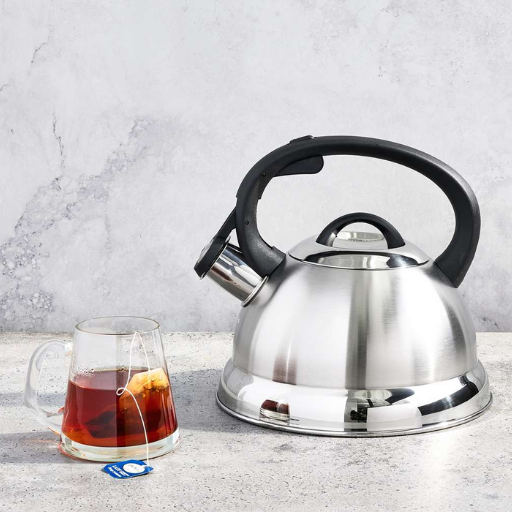
For best tea results ensure you start with freshly drawn, cold, filtered water, as the quality of the water makes a difference. Heat water to the temperature needed for your specific tea type, For example, green and white teas are best consumed at lower temperatures (160°F-185°F) while black and herbal teas require near-boiling water (200°F-212°F). Dosage of the tea leaves as it is done in tea shops is one teaspoon per cup and is adjustable according to preference. Recommended steeping times are different for each tea; green teas require 2-3 minutes, black teas 3-5 minutes, and herbal teas need 5-7 minutes. Each type has its own optimal steeping time, with minimal flexibility; using more than the recommended time results in bitterness. Pour as soon as steeping is done to maintain the full spectrum of taste.
Using a Tea Infuser for Loose Tea
A tea infuser is an essential tool for making loose leaf tea; offering both ease and accuracy. An infuser makes certain that water circulation is even by holding the leaves in a confined place. This allows the tea to steep properly without any loose particles escaping into the beverage. Today’s tea infusers come in different styles, such as mesh balls, baskets, silicone and others, so everyone can choose what best fits their preference and the size of their brewing vessel. A good example is stainless steel infusers. They do not readily corrode and are very durable. This makes them popular, long lasting options for tea lovers. Their efficiency makes them well-suited for single-cup brewing as well as larger volumes, depending on the size of the infuser. If used properly, an infuser will not only keep the tea leaves damage-free, but will also enhance the balanced extraction of the tea, improving its flavor.
How to Brew Different Types of Tea
Brewing tea requires different approaches based on the types of tea leaves since each type has its optimal brewing and infusion time which provides the best balance of flavor and aroma. Below is the best brewing method for popular types of tea:
- Green Tea
The distinct taste of green tea can be steeped between 160°F to 180°F (70°C-80°C). It is best not to exceed the suggested temperature because the notes would become scalding, fresh, steam, and grassy. The flavor is best when the tea is brewed for around 2-3 minutes with 8 ounces of water and 1 teaspoon of tea leaves.
- Black Tea
Black tea has a stronger profile and requires hotter water of around 200°F (93°C). Close to boiling water works best. For robust flavors 1 teaspoon per 8 ounces of water steeped for 3-5 mins should work well. To astringent brews longer steeping results. Preference should dictate steeping time.
- Oolong Tea
Oolong tea needs a bit more care to fall within the right flavor complexity range: steeping time and water temperature actually do matter. Keep water temperature between 185°F to 205°F (85°C–96°C) to extract maximum flavors during steeping. The same ratio of tea and water mentioned above applies as well with the addition of three to five minutes of steeping or even longer for more complex flavors. Reusing leaves is common practice due to the gradual change in provided flavor with each steep.
Can a Tea Kettle Whistle and Why is it Useful?
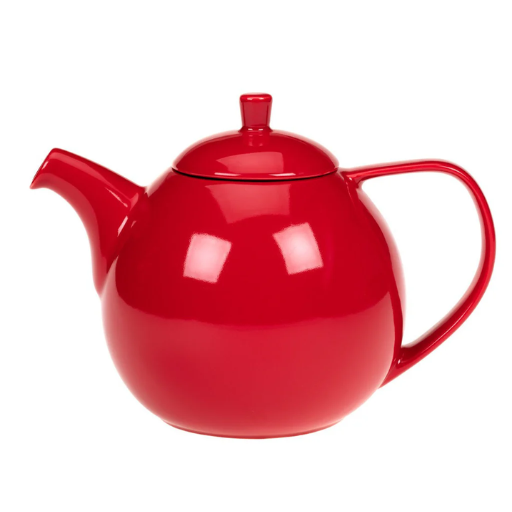
When water boils in a kettle, steam is released through a small opening in the kettle’s spout. This steam can be turned into vibration which then creates the sound of whistling. This specific feature and its sound signal the user when the water has boiled to perfection without wasting energy. The gentle buzz it makes ensures proper focus on the other tasks without having to constantly look at the kettle. This comes in handy with making items like tea that requires precision when dealing with water temperature. The whistling sound enables one to multi task effortlessly.
Understanding Whistling Mechanisms in Kettles
The processes of fluid mechanics and acoustics are applied in whistling kettles. During boiling, steam forms and is released through a small opening, the whistle spout, under considerable pressure. The steam’s rapid flow causes vibrations in the air column, resulting in whistling. Factors such as steam pressure, the spout’s size and shape, and steam pressure determine the specific pitch of the whistle. Modern kettles now refine such Mechanical steam whistle principles ensuring the sound produced serves its purpose and energy dissipation is minimized during the boiling process. With modern materials and engineering, mechanisms incorporated into contemporary kettles are more precise, durable, and efficient.
Benefits of Whistling Kettles for Safety
- Audible Alert for Boiling Water
The audial feature of whistling spouts provides safety notifications making them easier to use. This feature significantly aids to avert the possiblity of the kettle boiling while being left unmonitored, potentially damaging the kettle and becoming a fire risk.
- Prevention of Energy Overuse
Whistling kettles alert users electronically, thereby reducing energy wastage. While boiling water unattended, around 20%-30% of the energy is consumed, and the whistle achieves attention that reduces such wasteful expenditure.
- Burn Risk Mitigation
The whistle reminds the user to avoid overheating the kettle, exposing a handle to dangerously hot water. In addition to spouts that insulate water and handles that keep it cool, modern whistling kettles are also equipped with spout safety features that further decrease burn injuries.
- Child Safety Enhancement
A kettle’s sharp and distinct whistle can serve as an audio barrier to block off children from approaching the stove, thus enhancing safety. This ensures children do not go near open flames or hot surfaces, which is great for homes with little and curious toddlers.
Safety and efficiency can be considered as the primary reasons why kettles have whistling mechanisms in them, other than enabling quick heating of water. This also encourages minimal risk related to hazards in the kitchen.
Reference Sources
-
TEA KETTLES
This paper discusses scientific observations about boiling water in kettles and related practices. -
Not looking at kettles
Explores the design and societal impact of kettles, including the lives of miners and users. -
D. 2 Tea on stand: Samovars and spirit kettles
Focuses on the historical and cultural aspects of tea kettles, including their use in tea ceremonies. -
Design and Optimization of Performance of Electric Kettle
Compares the efficiency and heating time of traditional and modified electric kettle designs. -
Design and Analysis for the Improvement of Electric Kettle Performance
Discusses safety mechanisms and design improvements in electric kettles, such as cut-out mechanisms to prevent overheating.
Frequently Asked Questions (FAQs)
Q: What is the best type of tea pot for brewing loose leaf tea?
A: The best type of tea pot for brewing loose leaf tea typically includes a removable infuser. This allows for easy brewing and cleaning, making it ideal for those who enjoy a pot of tea.
Q: Can I use a stainless steel tea kettle on an induction cooktop?
A: Yes, you can use a stainless steel tea kettle on an induction cooktop, provided it is labeled as induction-compatible. Induction kettles often have a magnetic base that allows them to work with this type of heat source.
Q: What features should I look for in a small electric tea kettle?
A: When choosing a small electric tea kettle, look for features such as a quick boil time, a stainless steel or glass design, and a detachable base for easy pouring. A kettle with an infuser is also a great addition for brewing tea bags or loose leaf tea.
Q: Are Le Creuset tea kettles worth the investment?
A: Yes, Le Creuset tea kettles are known for their durability, design, and heat retention. They can be a stylish and functional addition to your kitchen, especially for stovetop brewing.
Q: How can I brew the perfect pot of tea using a teapot?
A: To brew the perfect pot of tea, start with fresh, cold water and bring it to the appropriate temperature for your type of tea. Use the right amount of tea leaves or tea bags, and steep for the recommended time. A tea pot with a wide opening can help with easy access for cleaning and serving.
Q: What is the difference between a glass electric kettle and a stovetop kettle?
A: A glass electric kettle heats water using electricity and typically features a built-in automatic shut-off for safety. A stovetop kettle, on the other hand, is placed on a heat source, such as a gas or induction stove, to boil water manually.
Q: Can I use a ceramic tea kettle in the dishwasher?
A: It depends on the specific ceramic tea kettle; some are labeled as dishwasher-safe, while others may require hand washing to prevent damage. Always check the manufacturer’s instructions before placing a ceramic kettle in the dishwasher.
Q: What are the benefits of using a gooseneck kettle for tea brewing?
A: A gooseneck kettle offers precise pouring control, which is essential for brewing tea and coffee. This design allows you to direct the water flow accurately over your tea leaves, ensuring an even extraction and a better flavor profile.
Q: How do I clean my stainless steel tea kettle?
A: To clean your stainless steel tea kettle, use warm soapy water and a soft cloth or sponge. For tough stains, a mixture of vinegar and water can be effective. Be sure to rinse thoroughly and dry completely after cleaning.

